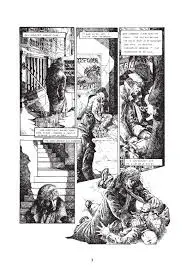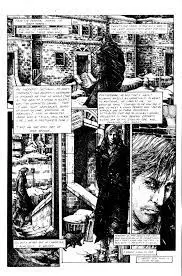Gin and Comics #26: A Tribute to Michael Zulli’s “The Puma Blues”
Written by Daniel Burns
A Timely Environmental Epic
In the wake of Michael Zulli’s passing last week, it feels both poignant and essential to revisit his magnum opus, “The Puma Blues.” A collaboration with Stephen Murphy, this graphic novel is a masterpiece of environmental fiction. It blends breathtaking wildlife art with a narrative that’s as compelling as it is cautionary.

The Story and Its Themes
Set in a near-future world ravaged by ecological disasters, “The Puma Blues” follows Gavia Immer, a government agent stationed in a Massachusetts wilderness reserve. Tasked with monitoring the ever-changing flora and fauna, Gavia’s solitary existence is punctuated by the haunting presence of mutated animals and the remnants of human interference. The story is a slow-burn exploration of environmental degradation, personal loss, and the quest for meaning in a world on the brink of collapse.
Murphy and Zulli’s narrative is densely packed with themes of ecological responsibility, political paranoia, and the haunting specter of nuclear annihilation. The plot meanders through Gavia’s introspective journey, often feeling like a fever dream where reality and imagination blur. This introspection is mirrored in the story’s structure, which favors the “why” and “how” over the “who” and “what.”
Visual Splendor
Zulli’s artwork is the true star of “The Puma Blues.” His meticulous, almost photographic renderings of wildlife—pumas, owls, and the enigmatic flying manta rays—are nothing short of museum-quality. Each panel is a testament to his skill. He captures the beauty and fragility of the natural world. Whether it’s the serene landscapes or the chaotic scenes of ecological turmoil, Zulli’s art immerses the reader in a world that’s both familiar and alien.


A Product of Its Time
Originally published in the mid-to-late 1980s, “The Puma Blues” is very much a product of its era. Laden with Reagan-era anxieties and a deep mistrust of corporate and governmental powers, this context is crucial to understanding the graphic novel’s tone and themes. It can feel dated yet eerily prescient in today’s environmental discourse.
A Complex Legacy
“The Puma Blues” is not without its flaws. The dense text and sometimes convoluted narrative can be challenging. The portrayal of female characters has been criticized for casual misogyny. However, these issues do little to diminish the overall impact of the work. It stands as a powerful and timely commentary on humanity’s relationship with nature.
Final Thoughts
As we mourn the loss of Michael Zulli, “The Puma Blues” serves as a fitting tribute to his legacy. It’s a haunting, beautiful, and thought-provoking work that continues to resonate, perhaps now more than ever. For fans of graphic novels and environmental literature, this is a must-read. So, pour yourself a gin, settle into a cozy nook, and lose yourself in the enigmatic world of “The Puma Blues” before we all find ourselves too busy treading burning water.


